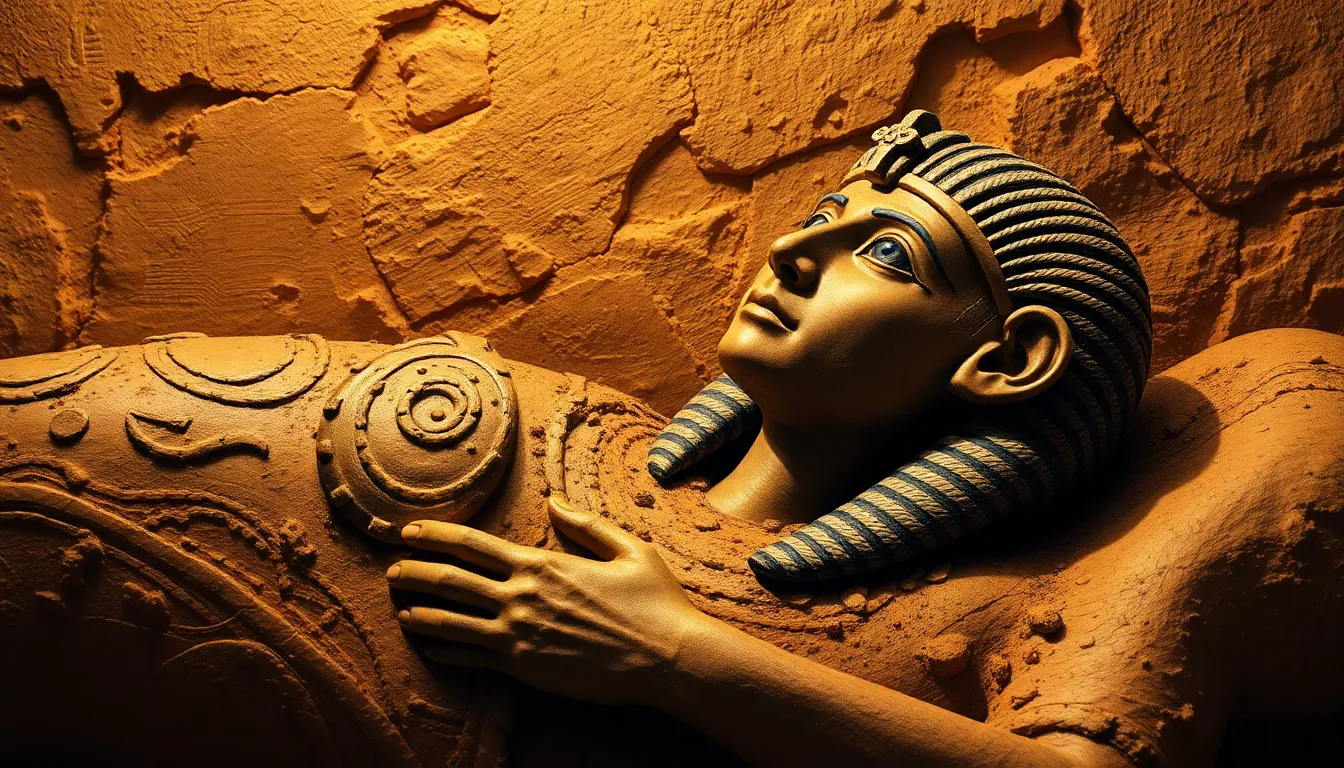The Truth Behind Egyptian Mummification: Myths vs. Reality
I. Introduction
Mummification holds a significant place in the annals of ancient Egyptian history. This intricate process was not merely a method of preserving the dead; it was deeply intertwined with the cultural and religious beliefs of the time. Ancient Egyptians believed that the afterlife was a continuation of life on earth, and mummification was essential in ensuring a safe passage to this next realm.
The purpose of this article is to explore common myths surrounding mummification and contrast them with the reality of these practices. By examining the historical context, cultural significance, and scientific insights, we can better understand the true nature of mummification in ancient Egypt.
II. Historical Context of Mummification
A. Origins and evolution of mummification in ancient Egypt
The practice of mummification in ancient Egypt dates back to around 2600 BCE, during the Third Dynasty. Initially, the method of preserving bodies was rudimentary, involving simple burial in sand, which naturally desiccated the body. Over time, this evolved into more sophisticated techniques involving embalming and wrapping.
B. Cultural and religious beliefs surrounding death and the afterlife
For the ancient Egyptians, death was not the end but a transition to another existence. They believed in a complex afterlife, where the deceased would be judged by Osiris, the god of the underworld. Successful judgment would grant them eternal life. Mummification was essential for this, as it preserved the body for the afterlife.
III. Common Myths About Mummification
A. Myth 1: Mummies were exclusively for pharaohs and the elite
Many people believe that only pharaohs and high-ranking officials were mummified. In reality, mummification was practiced across various social classes. While it is true that the wealthy could afford more elaborate mummification processes, common people also underwent mummification, albeit in simpler forms.
B. Myth 2: All ancient Egyptians were mummified
Another misconception is that all ancient Egyptians were mummified. In fact, mummification was not universally practiced. During certain periods, particularly in the early dynastic era, simpler burial methods sufficed for the lower classes. The decision to mummify often depended on one’s social status, financial means, and personal beliefs.
C. Myth 3: Mummification was a quick and simple process
Contrary to popular belief, mummification was a labor-intensive process that could take several weeks. The complexity of the procedures and the rituals involved made it a significant undertaking, requiring skilled embalmers and various materials.
IV. The Mummification Process: Step-by-Step
A. Preparation of the body
The mummification process began with the washing of the body, followed by the removal of personal belongings. The body was then placed on a special table for further treatment.
B. Removal of internal organs and their preservation
Next, embalmers removed the internal organs, which were believed to be prone to decay. The lungs, stomach, intestines, and liver were extracted and treated with natron, a naturally occurring salt, and then stored in canopic jars. The heart, however, was often left in place, as it was considered the center of intelligence and emotion.
C. Drying and wrapping techniques used in mummification
After the body was prepared, it was covered in natron for about 40 days to dehydrate it. Once dried, the body was carefully wrapped in linen strips, often layered with resin or oils to add an extra layer of protection. The wrapping process was intricate and often involved placing amulets within the layers for protection in the afterlife.
V. The Role of Rituals and Spells
A. Importance of religious rituals in the mummification process
Religious rituals played a vital role in the mummification process. Each step was accompanied by specific rites intended to honor the deceased and facilitate their journey to the afterlife. The rituals ensured that the deceased would be welcomed by the gods.
B. Use of spells and texts to protect the deceased in the afterlife
Ancient Egyptians inscribed spells and texts on tomb walls and within the wrappings of mummies. These texts, such as the *Book of the Dead*, contained instructions and prayers designed to guide the deceased through the afterlife and protect them from malevolent forces.
VI. Mummification Materials and Techniques
A. Natural substances used (resins, oils, linen)
The materials used in mummification were largely natural. Key substances included:
- Resins: Used for their preservative properties.
- Oils: Employed to moisturize and protect the skin.
- Linen: The primary material for wrapping the body.
B. Innovations in mummification techniques over time
Over the centuries, mummification techniques evolved significantly. From the early use of simple burial methods, the Egyptians developed complex processes involving intricate embalming techniques, innovative preservation materials, and detailed rituals.
VII. The Scientific Perspective: What Modern Research Reveals
A. Advances in technology and archaeology illuminating mummification practices
Modern scientific techniques, such as CT scanning and DNA analysis, have provided new insights into mummification practices. These technologies allow researchers to study mummies without damaging them, revealing details about the health, lifestyle, and even the cause of death of ancient Egyptians.
B. Insights gained from studying mummies and their preservation
Research has shown that the methods used in mummification were remarkably effective, allowing bodies to be preserved for thousands of years. Studies have also uncovered information about ancient Egyptian medicine, diet, and social structures through the analysis of mummified remains.
VIII. Conclusion
In summary, the realities of mummification in ancient Egypt are often misunderstood. While many myths suggest exclusivity, simplicity, and rapidity in the mummification process, the truth reveals a complex, culturally rich practice essential to Egyptian beliefs about the afterlife. The lasting legacy of mummification continues to enhance our understanding of ancient Egyptian culture and their profound respect for life and death.




